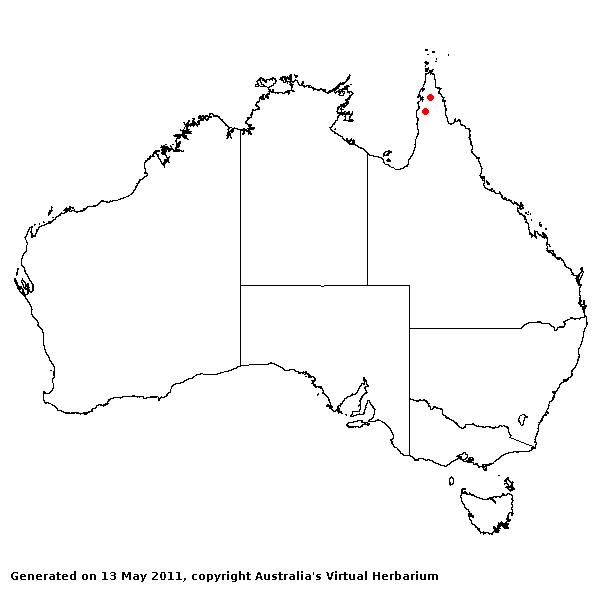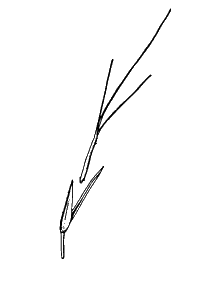Aristida cumingiana Trin. & Rupr. Sp.
Gram. 141 (1842).
Classification. (GPWG 2001) : Subfamily
Aristidoideae. Aristideae.
Type of Basionym or
Protologue Information: Philippine Islands: Luzon:, H. Cuming 671
(HT: LE; ILT: G-Del, MO-2874635, US-80993 (fragm. ex G-Del)).
Key references
(books and floras): [1969] E.E.Henty, Manual Grasses New Guinea
(29), [2002] D.Sharp & B.K.Simon, AusGrass, Grasses of Australia.
Illustrations:
[2002] D.Sharp & B.K.Simon, AusGrass, Grasses of Australiia.
Derivation: in
honor of Hugh Cuming (1791–1865) English naturalist and traveller.
Habit. Annual.
Culms 8–30 cm tall. Mid-culm internodes glabrous. Lateral branches simple. Leaves
cauline. Ligule a fringe of hairs, 0.2 mm long. Leaf-blades straight,
conduplicate or involute or convolute, 2–7 cm long, 0.5–1 mm wide.
Inflorescence.
Inflorescence compound, a panicle. Panicle elliptic, effuse, 3–8 cm long, 1.5–4
cm wide.
Spikelets.
Spikelets pedicelled. Fertile spikelets 1-flowered, comprising 1 fertile
floret(s), without rachilla extension, lanceolate, terete, 2–2.5 mm long.
Glumes.
Glumes similar, thinner than fertile lemma. Lower glume lanceolate, membranous,
keeled, 1-keeled, 1 -nerved. Lower glume surface glabrous. Lower glume apex
mucronate. Upper glume lanceolate, 2–3 mm long, membranous, keeled, 1-keeled, 1
-nerved. Upper glume surface glabrous. Upper glume apex entire, mucronate.
Florets.
Fertile lemma 1.5–1.8 mm long, without keel, 3 -nerved. Lemma apex awned, 3
-awned. Median (principal) awn without a column. Lateral lemma awns present.
Palea without keels. Anthers 3.
Continental
Distribution: Africa, Temperate Asia, Tropical Asia, and Australasia.
Australian
Distribution: Queensland.
Queensland:
Cook.
Notes.
A. cumingiana has the smallest spikelets in Australian Aristida
species with spikelets to 3 mm long. It is a delicate annual only recently
collected in Australia for the first time and has an unusually widespread distribution
for an Aristida species, extending from Australia to south-east Asia,
China, India and tropical Africa.
Restricted
in Australia to the north-western tip of Cape York Peninsula: also in New
Guinea and extending throughout south-east Asia to China, India and tropical
Africa. Melaleuca communities on alluvial soil. Flowering and fruiting
June and September.



